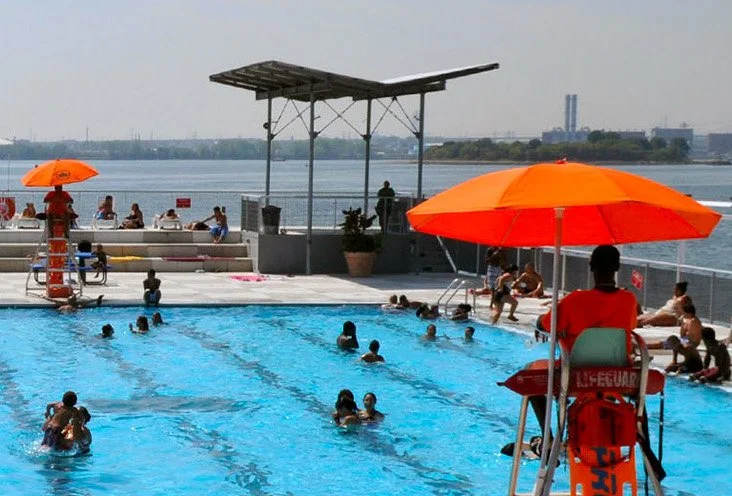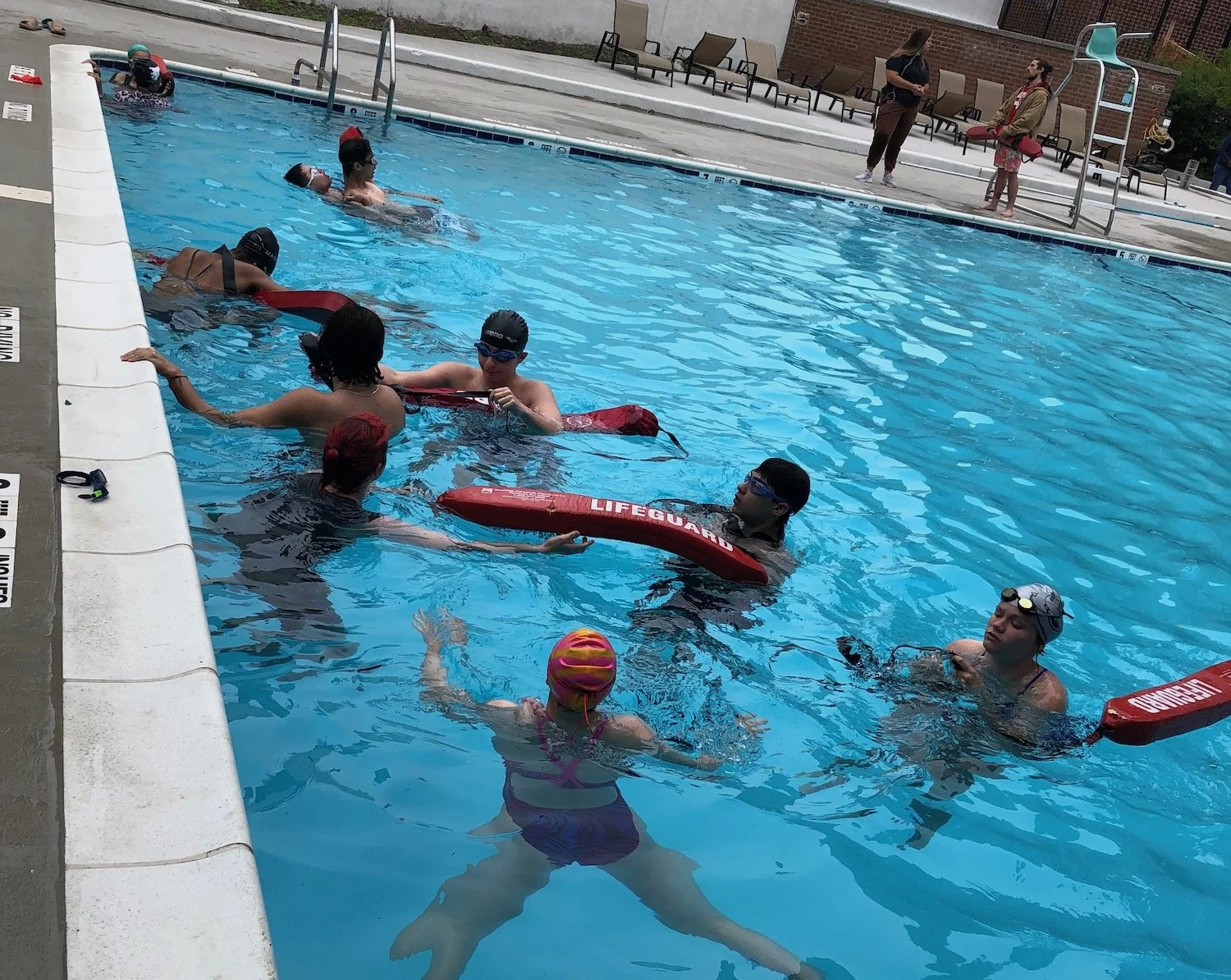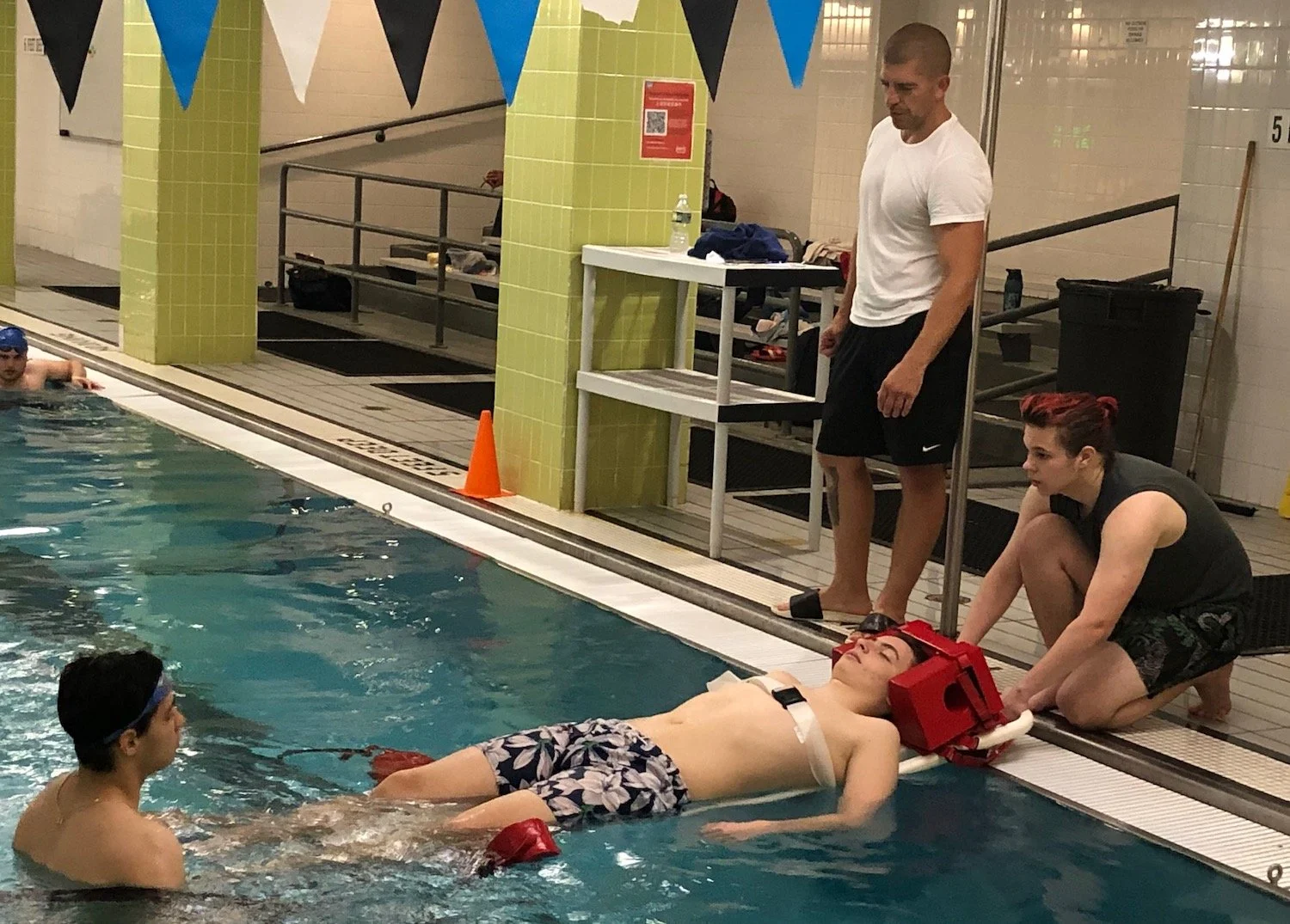No Lifeguards? For Brooklyn Non-Profit, No Problem
FORT GREENE, BROOKLYN. As many have likely heard, there are not enough lifeguards in New York City this summer.
Again.
As in 2022, the NYC Parks Department has been unable to coax enough returning guards or new trainees to cover the city’s 14 miles of beaches—from Orchard Beach in the Bronx to South Beach in Staten Island to Rockaway Beach in Queens—or public outdoor pools like the grand Astoria Pool in Queens or the spacious Jackie Robinson Pool in Harlem. The shortage has even caused Parks to cancel adult lap swim at all its outdoor pools for the third straight year.
Photo: NYC Parks
It also means that learn-to-swim instruction—which the city has offered free of charge to its residents since 1938—has been cut drastically. In 2019, the year before COVID struck, Parks offered swim lessons to 30,000 people. This summer, only 1,000 hopefuls can join the program—with sign-ups determined by lottery.
To make matters worse, a political firestorm has engulfed the City’s Lifeguard Academy. Peter Stein, leader of the union that oversees the city’s lifeguards, appears to be more concerned with maintaining a stranglehold on his position than committing to provide enough lifeguards to protect New York’s public pools and beaches.
The Lifeguard Academy’s training program is free, and, at least by description, more rigorous than the training the Red Cross offers. Applicants must swim a fifty-yard distance in 45 seconds or less and possess no worse than 20/30 vision in one eye and 20/40 in the other.
Lifeguard candidates relax between lessons at the Philip Howard Apartment pool. Photo: M. Randazzo
For high school swim team members—the best available candidate pool—these are achievable standards. Applicants who persevere through the city’s 16-week training program not only get to work at historic outdoor pools and the city’s many public beaches, but also are placed on the municipal payroll, a worthwhile benefit for anyone considering a career as a civil servant (think police officer, firefighter, teacher), and thus on track for a New York City pension.
Recent New York Times and The City coverage of Stein and his union have explored why these benefits have proven insufficient to entice enough candidates into the city’s lifeguard ranks and, thus, why we have a lifeguard shortage affecting public and private pools alike.
That is, unless someone steps into the breach.
I run Inclusive Community Wellness (ICW), a non-profit dedicated to New Yorkers’ health and wellness, with a strong interest in swimming and water sports. In an effort to be part of the solution, we engaged Vlad Frenkel, a certified Red Cross lifeguard and CPR trainer, to run a free lifeguard certification course. Our target demographic? High school students, especially those who swim well enough but who might not be able to afford certification.
We anticipated 20–30 responses—and that we’d pick the 10 best swimmers who could also manage a time frame compressed by the arrival of summer.
We got more than 90 applicants.
Trainer Vlad Frenkel instructs Felic Gerzon, Ivan Shelest and Stephan Shteynberg. Photo: M. Randazzo
What to do? ICW currently doesn’t have the pool time or funding to accommodate so many prospects. But we were impressed with their collective willingness to learn a skill that would benefit fellow New Yorkers as well as themselves. And that, coupled with the compelling need, persuaded us to strive to overcome the cost and logistical hurdles.
Troubles on the pool deck
We held our first session in early June with 28 candidates who ranged in age from 15 to 28. But our initial efforts did not go smoothly—and highlighted the larger issue of who gets access to water and when. A handshake agreement to train at a local pool in Downtown Brooklyn turned ugly when a competing claim took place on the pool deck.
We lost the argument that day, but it fueled our collective desire to ensure that our prospects got a chance to succeed.
We found pool time—and lifeguards—on short notice. Léman Manhattan school in Downtown Manhattan, and the Philip Howards Apartment complex in Midwood—featuring an amazing outdoor facility—combined to save our program. That, and the 16 fantastic candidates who stuck with us through delays and sessions that fluctuated between Brooklyn and Manhattan.
Fifteen participants completed their exams on June 27 and 14 of them passed. We expect them to start working immediately in private pools throughout the five boroughs. And, funding and pool time permitting, we’re not done yet. We have 80 more applicants eager to jump in, train and be certified.
With creativity and determination, we can beat the shortage and make this a life-saving summer for all New Yorkers.



